Sourav Pan
Transcript
Diatoms are fascinating single-celled algae that exist all around us in the microscopic world. These tiny organisms are much more important than their size might suggest.
Let’s look at what real diatoms look like under a microscope. These images show the incredible diversity of diatom shapes and structures found in nature.
Just like plants, diatoms perform photosynthesis. They capture sunlight and convert carbon dioxide and water into energy and oxygen. This makes them incredibly important for life on Earth.
Diatoms are found everywhere there’s water. They thrive in oceans, lakes, rivers, and even in moist soil. No matter where you find water on Earth, you’ll likely find diatoms living there.
Think of diatoms as the grass of the aquatic world. Just like grass forms the foundation of land ecosystems, diatoms form the base of aquatic food chains, supporting all marine life above them.
As the foundation of aquatic food chains, diatoms support all marine life. From tiny zooplankton to massive whales, every ocean creature depends on these microscopic powerhouses for survival.
Diatoms are incredibly tiny organisms that exist in a microscopic world. To understand just how small they are, we need to think in terms of micrometers.
For perspective, a human hair is about 75 micrometers wide. That’s already incredibly thin, but diatoms are even smaller than this!
Diatoms range in size from just 2 micrometers to 200 micrometers. The smallest diatoms are incredibly tiny – much smaller than the width of a human hair.
Now let’s explore the amazing diversity of diatom shapes. This variety is not just beautiful – it’s crucial for scientists to identify different species.
Here we can see the incredible diversity of real diatom shapes under a microscope. Each unique form represents a different species with its own ecological role.
Diatoms come in many basic geometric shapes. We find circular diatoms, triangular ones, square forms, and elliptical varieties. Each shape has evolved for specific environmental conditions.
This shape diversity is incredibly important for scientists. Different shapes help diatoms survive in different water conditions, and they allow researchers to identify species and understand ecosystem health.
To summarize: diatoms are microscopic organisms ranging from 2 to 200 micrometers in size, much smaller than a human hair. Their diverse shapes – from circles to triangles to squares and ellipses – serve both as identification markers for scientists and as evolutionary adaptations to their aquatic environments.
What makes diatoms truly remarkable is their incredible outer shell, called a frustule. This isn’t just any ordinary cell wall – it’s a masterpiece of natural engineering.
The frustule is made of silica – the exact same material that makes up glass! Imagine a living organism that builds its home from glass-like material, creating structures more intricate than any human craftsman could design.
Think of the frustule as a tiny, ornate jewelry box that protects the delicate living cell inside. These shells come in countless beautiful patterns – some look like intricate lacework, others like geometric art pieces.
Here we can see multiple diatoms in their natural aquatic environment. Notice how each one has its own unique frustule design – like fingerprints, no two are exactly alike.
What’s truly amazing about these silica shells is their incredible durability. Long after the diatom dies, the frustule remains intact, creating layers of diatomaceous earth that can last for millions of years.
These silica frustules are nature’s glass art – beautiful, functional, and incredibly durable. They protect the living diatom and create a lasting legacy that scientists can study millions of years later.
Diatoms have fascinating social behaviors. They can live completely alone as individual cells, or they can come together to form beautiful colonies with their neighbors.
When diatoms choose to live alone, they drift freely through the water as single cells. Each solitary diatom is a complete, independent organism capable of photosynthesis and reproduction.
However, many diatoms prefer the social life. They can link together to form colonies, creating stunning geometric patterns. One of the most common colony shapes is a chain, where diatoms connect end to end like beads on a string.
Diatoms can also form spectacular star-shaped colonies. These radial patterns are not just beautiful – they’re functional, helping the colony capture more light and nutrients from all directions.
Now let’s look at a real example. This microscopic image shows an actual star-shaped diatom colony with intricate internal patterns. Notice the five-pointed star structure and the complex textures within each cell.
Whether living alone or in groups, diatoms play crucial roles in their aquatic ecosystems. Solitary diatoms can respond quickly to environmental changes, while colonial diatoms can share resources and create more stable communities.
Diatoms contain specialized structures called chloroplasts, which are the powerhouses of photosynthesis. These chloroplasts give diatoms their distinctive yellowish-brown appearance.
Chloroplasts are membrane-bound organelles that contain the molecular machinery needed for photosynthesis. In diatoms, these structures are distributed throughout the cell.
Here we can see real diatoms under a microscope. Notice the yellowish-brown coloration that comes from their chloroplasts.
The yellowish-brown color comes from a combination of pigments. The dominant pigment is fucoxanthin, which gives the brown coloration. Diatoms also contain chlorophyll a and chlorophyll c for capturing light energy.
Chloroplasts have a complex internal structure. The thylakoids contain the pigments we just discussed, while the stroma is where carbon dioxide is converted into sugar.
The yellowish-brown pigments in diatom chloroplasts capture sunlight and use it to power photosynthesis. This process converts carbon dioxide and water into sugar and oxygen, providing energy for the diatom and oxygen for the environment.
These yellowish-brown chloroplasts are perfectly adapted for underwater conditions, allowing diatoms to efficiently capture available light and perform photosynthesis even in deeper waters where red light is filtered out.
Some diatoms possess remarkable structures called flagella that enable them to actively move through water. These whip-like appendages are key to understanding how certain diatoms navigate their aquatic environment.
Flagella are whip-like structures that extend from the diatom cell. They work like tiny motors, beating in coordinated patterns to propel the diatom through water.
This swimming ability allows flagellated diatoms to position themselves optimally in the water column. They can move toward sunlight for photosynthesis or seek areas rich in nutrients.
Let’s examine some examples of flagellated microorganisms to better understand these structures. Here we can see dinoflagellates, which are similar to diatoms and also use flagella for movement.
The structure of flagella is quite complex. This detailed diagram shows how flagella are anchored in the cell membrane and the protein machinery that drives their rotation and movement.
However, it’s important to understand that not all diatoms have flagella. Many diatom species lack these structures entirely and must rely on other mechanisms for movement.
Diatoms without flagella rely on water currents, turbulence, and other passive mechanisms to move through their environment. Some may also use different types of movement like gliding along surfaces.
Understanding flagellar movement in diatoms helps us appreciate how these microscopic organisms actively navigate their aquatic world, seeking optimal conditions for survival and growth.
Diatoms are true oxygen production powerhouses! These microscopic organisms are responsible for producing between twenty and fifty percent of all the oxygen in Earth’s atmosphere.
They accomplish this incredible feat through photosynthesis, the same process that plants use. Diatoms capture sunlight energy and combine it with water and carbon dioxide to create their own food.
As a byproduct of this process, diatoms release oxygen into the water and atmosphere. Each tiny diatom is like a miniature oxygen factory, working around the clock to keep our planet breathable.
To put this in perspective, diatoms produce more oxygen than all the world’s rainforests combined! While rainforests contribute about fifteen percent of our oxygen, these microscopic marine organisms contribute up to fifty percent.
This diagram shows how diatom blooms in the ocean contribute to global oxygen production through photosynthesis and other biochemical processes.
This oxygen cycle diagram illustrates how diatoms in the ocean contribute to the global oxygen balance, working alongside land-based sources to maintain atmospheric oxygen levels.
The incredible oxygen production by diatoms makes them essential for life on Earth. Without these microscopic powerhouses, our planet would have far less oxygen, making it impossible for most life forms to survive.
Diatoms serve as the foundation of aquatic food chains, acting as primary producers that convert sunlight into energy through photosynthesis. This makes them the essential starting point for nearly all life in aquatic ecosystems.
The food chain begins when tiny animals called zooplankton feed on diatoms. These microscopic creatures consume vast quantities of diatoms, transferring the energy up to the next level of the food web.
Small fish then feed on zooplankton, and larger fish feed on smaller fish. This creates a complex food web where energy flows from diatoms through multiple levels of marine life.
This ocean food web diagram shows the complexity of marine ecosystems. Notice how phytoplankton, which includes diatoms, forms the foundation that supports all other marine life through interconnected feeding relationships.
Understanding the difference between phytoplankton and zooplankton is crucial. Phytoplankton, including diatoms, are plant-like organisms that produce their own food. Zooplankton are animal-like organisms that must consume other organisms for energy.
Without diatoms, aquatic ecosystems would collapse. They are so fundamental that removing them would cause a cascade effect, eliminating food sources for zooplankton, which would then affect fish populations, and ultimately impact the entire marine food web.
Diatoms are key players in two of Earth’s most important biogeochemical cycles: the carbon cycle and the silica cycle. These microscopic organisms help regulate our planet’s climate and ocean chemistry.
In the carbon cycle, diatoms act as tiny carbon dioxide absorbers. During photosynthesis, they capture atmospheric CO2 dissolved in water and convert it into organic compounds, helping to remove greenhouse gases from our atmosphere.
When diatoms die, their organic matter can sink to the ocean floor, effectively locking away carbon for long periods. This process, called carbon sequestration, helps regulate Earth’s temperature by reducing atmospheric CO2 levels.
In the silica cycle, diatoms extract dissolved silica from seawater to build their intricate glass-like shells called frustules. This process removes silica from the water column and concentrates it in their cell walls.
When diatoms die, their silica shells sink to the ocean bottom, forming layers of diatomaceous earth. Over millions of years, these deposits create valuable geological formations while permanently removing silica from the water cycle.
Through these cycles, diatoms connect the atmosphere, oceans, and seafloor. They help stabilize Earth’s climate by removing carbon dioxide and create valuable geological resources through silica deposition. These tiny organisms demonstrate how microscopic life can have planetary-scale impacts.
Diatoms act as crucial nutrient exchange regulators in aquatic ecosystems. They control the flow of essential nutrients like nitrogen and phosphorus, maintaining the delicate balance that keeps aquatic environments healthy.
Diatoms actively absorb nutrients from the surrounding water. They take up nitrogen and phosphorus, two key nutrients that are essential for all aquatic life but can become problematic when present in excess.
This nutrient absorption serves a critical regulatory function. By removing excess nitrogen and phosphorus from the water, diatoms help prevent harmful algal blooms that can devastate aquatic ecosystems.
When diatoms complete their life cycle and die, they don’t simply disappear. Instead, they decompose and release the stored nutrients back into the water, making them available for other organisms in the ecosystem.
This creates a continuous regulatory cycle. Living diatoms remove excess nutrients to prevent harmful blooms, while decomposing diatoms release nutrients back to support other marine life. This balance is essential for healthy aquatic ecosystems.
Through this regulatory mechanism, diatoms maintain the nutrient balance that supports diverse aquatic life while preventing the environmental problems caused by nutrient pollution. They are truly the unsung heroes of aquatic ecosystem health.
Diatoms are like tiny environmental detectives. These microscopic organisms are incredibly sensitive to changes in their water environment, making them excellent indicators of water quality and pollution levels.
Different diatom species thrive in different water conditions. Clean, nutrient-poor waters support certain types of diatoms, while polluted or nutrient-rich waters favor completely different species. This makes diatom communities like fingerprints for water quality.
Scientists collect water samples and examine the diatom communities under microscopes. By identifying which species are present and in what numbers, they can determine the water quality and detect pollution sources that might not be visible to the naked eye.
This diatom-based water quality monitoring is used worldwide to detect pollution from agriculture, industry, and urban runoff. It’s particularly valuable because diatoms can reveal long-term environmental trends and help scientists track the health of rivers, lakes, and coastal waters over time.
Diatoms reproduce primarily through a process called binary fission. This is a type of asexual reproduction where a single parent cell divides to create two identical daughter cells.
The process begins with a single diatom cell. What makes diatom reproduction unique is how their silica shell, called a frustule, is involved in the division process.
During binary fission, the diatom cell begins to divide. The frustule, which consists of two halves, starts to separate as the cell prepares to split into two daughter cells.
Each daughter cell inherits one half of the original frustule. The cell that receives the larger top half keeps it, while the cell that receives the smaller bottom half also keeps its inherited piece.
Now comes the crucial part: each daughter cell must create a new half to complete its frustule. However, the new half is always smaller and fits inside the inherited half, like a lid fitting into a container.
The result is two complete daughter cells, but notice something important: they are smaller than the original parent cell. This size reduction happens with each generation of binary fission.
Let’s look at a detailed diagram that shows this complete process. This illustration demonstrates both the asexual reproduction through binary fission and how it leads to progressively smaller cells over time.
This diagram clearly shows how binary fission results in smaller and smaller diatoms with each division. Eventually, when diatoms become too small, they must undergo sexual reproduction to restore their original size – but that’s a topic for the next section.
When diatoms undergo repeated binary fission, they face a critical problem. Each division makes them progressively smaller, and eventually they reach a size that threatens their survival.
To solve this size crisis, diatoms have evolved sexual reproduction. Unlike binary fission, sexual reproduction involves two diatom cells coming together and fusing to create something entirely new.
The two diatom cells move toward each other and undergo cell fusion. This process combines their genetic material to form a single zygote, which contains DNA from both parent cells.
The zygote then develops into a specialized structure called an auxospore. The auxospore is like a cellular expansion chamber that allows the diatom to grow back to its original size.
Now let’s look at a detailed diagram of this complete life cycle. This shows how diatoms maintain their population through both size reduction and size restoration.
As you can see in this diagram, the cycle begins with diatoms dividing and getting progressively smaller. When they reach a critical threshold, sexual reproduction is triggered, leading to auxospore formation and size restoration.
The auxospore acts like a biological reset button. It expands to restore the diatom to its full size, ensuring the population can continue thriving. This elegant solution allows diatoms to maintain their species indefinitely.
Diatoms are incredibly fast reproducers. Under optimal conditions, they can double their entire population in just 24 hours.
Let’s start with a single diatom cell. This tiny organism is about to demonstrate one of nature’s most impressive growth rates.
For rapid reproduction to occur, diatoms need two key ingredients: abundant nutrients from the water and plenty of sunlight for photosynthesis.
When conditions are perfect, something remarkable happens. In just 24 hours, that single diatom divides and becomes two diatoms.
But the growth doesn’t stop there. Each of those two diatoms can also divide in the next 24 hours, creating four diatoms. Then eight, then sixteen, and so on.
This exponential growth rate means that from a single diatom, you could theoretically have over one million diatoms in just 20 days under perfect conditions.
This incredible growth rate allows diatom populations to quickly respond to favorable environmental conditions, like nutrient blooms in spring or after storms that bring fresh nutrients to the water.
This rapid population doubling is why diatoms can quickly become the dominant organisms in aquatic environments and why they play such a crucial role in marine and freshwater ecosystems worldwide.
When diatoms die, their beautiful silica shells don’t just disappear. Over millions of years, these microscopic structures accumulate on ocean and lake floors, forming thick deposits.
This accumulated material is called diatomaceous earth, a fine powder that retains the unique properties of the original diatom shells. The powder appears as a light-colored, chalky substance.
Diatomaceous earth has two key properties that make it incredibly useful in industry. First, it’s highly porous – full of tiny holes that can trap particles. Second, it’s mildly abrasive, making it perfect for gentle scrubbing and polishing.
One major application is filtration. Swimming pool filters use diatomaceous earth to trap tiny particles and keep water crystal clear. The porous structure acts like a microscopic net, catching debris while allowing clean water to pass through.
The brewing industry also relies heavily on diatomaceous earth for beer filtration. It removes yeast, proteins, and other particles to create the clear, bright beer we see in bottles and cans.
The second major application is polishing. Diatomaceous earth’s mild abrasive properties make it perfect for toothpaste, where it gently removes plaque and stains without damaging tooth enamel. It’s also used in metal polishes and cleaning compounds.
From ancient ocean floors to modern industry, diatomaceous earth demonstrates how nature’s microscopic architects continue to serve us millions of years after their death. These tiny diatom shells have found new life in keeping our water clean and our teeth bright.
Diatoms are revolutionizing nanotechnology with their incredibly intricate silica shells. These microscopic organisms have evolved perfect nanoscale structures that scientists are now using as templates for cutting-edge applications.
What makes diatom frustules so special for nanotechnology? Their pores are precisely sized at the nanometer scale – that’s one billionth of a meter. This natural precision is incredibly difficult and expensive to manufacture artificially.
One of the most promising applications is drug delivery. Scientists can load medications into the tiny pores of diatom shells, creating microscopic delivery vehicles that can target specific parts of the body.
Biosensors are another exciting application. The unique pore structure of diatoms can be modified to detect specific molecules or chemicals. When target substances enter the pores, they trigger detectable changes in optical or electrical properties.
The future possibilities are endless. Scientists are exploring using diatom templates for creating ultra-thin filters, optical devices, and even computer components. These natural nanostructures could revolutionize how we manufacture technology at the smallest scales.
Key takeaway: Diatoms represent nature’s perfect nanotechnology. Their precisely engineered silica shells offer templates for drug delivery, biosensors, and advanced manufacturing that could transform medicine and technology.
Diatoms play a crucial role in forensic science, particularly in investigating drowning cases. These microscopic algae can provide vital evidence that helps forensic scientists determine both if someone drowned and where the drowning occurred.
When someone drowns, they inhale water containing diatoms. These microscopic organisms enter the lungs and can even penetrate into other organs through the bloodstream.
The key insight is that diatoms from the drowning location become trapped in the victim’s tissues, creating a microscopic fingerprint of where the drowning occurred.
Forensic scientists follow a systematic process. They extract tissue samples from the victim’s lungs and other organs, then identify the specific diatom species present under a microscope.
These diatom species are then compared with samples from potential drowning locations. Different bodies of water have unique diatom communities, like fingerprints.
Different water sources contain distinct diatom communities. Rivers have specific freshwater species, oceans contain marine varieties, and lakes have unique local populations.
Importantly, swimming pools typically contain no diatoms, which helps forensic scientists distinguish between drowning in natural water versus other scenarios.
Diatom analysis has solved numerous forensic cases. It can confirm drowning as the cause of death, identify the specific location where drowning occurred, and even help solve cold cases with new evidence.
This forensic technique demonstrates how these tiny organisms can provide powerful evidence in criminal investigations, turning microscopic life into crucial legal testimony.
Diatom fossils act like tiny time capsules, preserving detailed records of ancient ocean conditions in sediment layers on the seafloor.
Scientists drill deep into ocean sediments to extract cores that contain layers of fossilized diatoms. Each layer represents a different time period, like pages in Earth’s history book.
Different types of diatoms lived in different environmental conditions. By identifying which species are found in each layer, scientists can determine what the ocean was like thousands of years ago.
Scientists analyze these fossilized diatoms under microscopes to identify species and count their abundance. Each species tells a story about temperature, salinity, and nutrient levels.
By combining data from multiple diatom species, scientists can reconstruct detailed pictures of past ocean conditions, including temperature changes, ice age cycles, and ancient climate patterns.
This diatom-based paleoceanography helps scientists understand natural climate variations and provides crucial context for studying modern climate change.
Diatoms serve as powerful biological indicators for monitoring water quality. These microscopic organisms are so sensitive to environmental changes that scientists use them like living thermometers to assess the health of aquatic ecosystems.
Different water conditions support different diatom communities. In healthy, clean water, we find diverse diatom species thriving. But when water becomes polluted or stressed, the diatom community changes dramatically.
This comparison shows how nutrient levels dramatically affect diatom communities. In high-nutrient environments, we see different species and shapes compared to low-nutrient conditions. This difference allows scientists to determine nutrient pollution levels just by examining which diatoms are present.
The monitoring process involves three key steps. First, scientists collect water samples from various locations. Then they examine these samples under microscopes to identify and count different diatom species. Finally, they analyze which species are present to determine water quality conditions.
Different types of environmental stress create distinct patterns in diatom communities. Industrial pollution favors toxic-tolerant species. Nutrient enrichment from fertilizers causes fast-growing species to dominate. Changes in pH levels bring out acid-loving or alkaline-preferring diatoms.
This monitoring information has real-world applications. Policymakers use diatom data to set appropriate pollution limits and environmental regulations. Water treatment facilities use it to assess the effectiveness of their cleaning processes. Environmental managers rely on diatom monitoring to track ecosystem health over time.
Diatom-based water quality monitoring provides scientists and policymakers with precise, reliable data to make informed decisions about protecting our water resources. These tiny organisms serve as early warning systems, helping us detect environmental problems before they become critical.
Every breath you take contains oxygen produced by tiny marine organisms called diatoms. These microscopic algae are absolutely critical for maintaining the oxygen levels that sustain all life on Earth.
Through photosynthesis, diatoms convert carbon dioxide and water into oxygen using sunlight. This process happens billions of times every second in oceans around the world.
Diatoms are responsible for producing approximately twenty percent of all the oxygen in Earth’s atmosphere. To put this in perspective, let’s look at the composition of the air we breathe.
This oxygen production happens on a massive scale across Earth’s oceans. From space, we can see the vast marine ecosystems where billions of diatoms are constantly working to maintain our atmosphere.
The biological carbon pump shows how diatoms and other phytoplankton form the foundation of ocean productivity. This process not only produces oxygen but also removes carbon dioxide from the atmosphere.
Protecting diatom populations is absolutely crucial for maintaining a healthy atmosphere. Climate change, pollution, and ocean acidification all threaten these vital organisms and, by extension, our oxygen supply.
Every diatom matters in the global oxygen cycle. By understanding and protecting these remarkable organisms, we safeguard the very air we breathe and ensure a healthy planet for future generations.
Diatoms play a crucial role in carbon sequestration, one of nature’s most important processes for regulating Earth’s climate. Carbon sequestration is the removal of carbon dioxide from the atmosphere and its long-term storage.
Carbon sequestration happens in many ways – from industrial capture systems to natural processes. But one of the most significant natural carbon sequestration processes occurs in our oceans, where diatoms are the key players.
Diatoms absorb carbon dioxide from seawater during photosynthesis, converting it into organic carbon compounds. This process removes CO2 that would otherwise remain in the atmosphere as a greenhouse gas.
When diatoms die, they begin their most important contribution to carbon sequestration. Their heavy silica shells cause them to sink rapidly through the water column, carrying the carbon they absorbed during their lifetime down to the deep ocean.
Once diatoms reach the ocean floor, they become part of marine sediments. The carbon they contain can remain locked away for hundreds to thousands of years, effectively removing it from the carbon cycle and helping to regulate Earth’s climate.
The scale of diatom carbon sequestration is enormous. Scientists estimate that diatoms are responsible for sequestering billions of tons of carbon annually, making them one of Earth’s most important natural climate regulators.
As climate change becomes an increasingly urgent global challenge, understanding and protecting diatom populations becomes even more critical. These microscopic organisms are quietly working to keep our planet’s carbon cycle in balance.
Diatoms serve as one of the most important food sources in marine ecosystems. These tiny organisms form the foundation that supports virtually all marine life.
Zooplankton are the primary consumers of diatoms. These small animals filter diatoms from the water, converting plant energy into animal protein that can be used by larger marine creatures.
This creates a food web that extends throughout the entire marine ecosystem. Energy flows from diatoms up through multiple levels of marine life.
The marine food web starts with diatoms at the base, supporting zooplankton, which feed small fish, which in turn feed larger predators like tuna and sharks.
The diversity of phytoplankton, including many types of diatoms, supports this complex web of marine life.
This image shows the incredible diversity of phytoplankton species, including various types of diatoms, that form the base of marine food webs around the world.
Diatom blooms like this one provide massive amounts of food for marine ecosystems. These blooms can support entire fisheries and are crucial for maintaining healthy ocean food webs.
Without diatoms, marine food webs would collapse. Fisheries that feed millions of people depend on the energy that flows from these microscopic organisms up through the food chain.
These tiny diatoms may be invisible to the naked eye, but they are truly the unsung heroes that sustain life in our oceans.
Study Materials
Diatoms - Definition, Structure, Life Cycle, Importance
Helpful: 0%
Related Videos
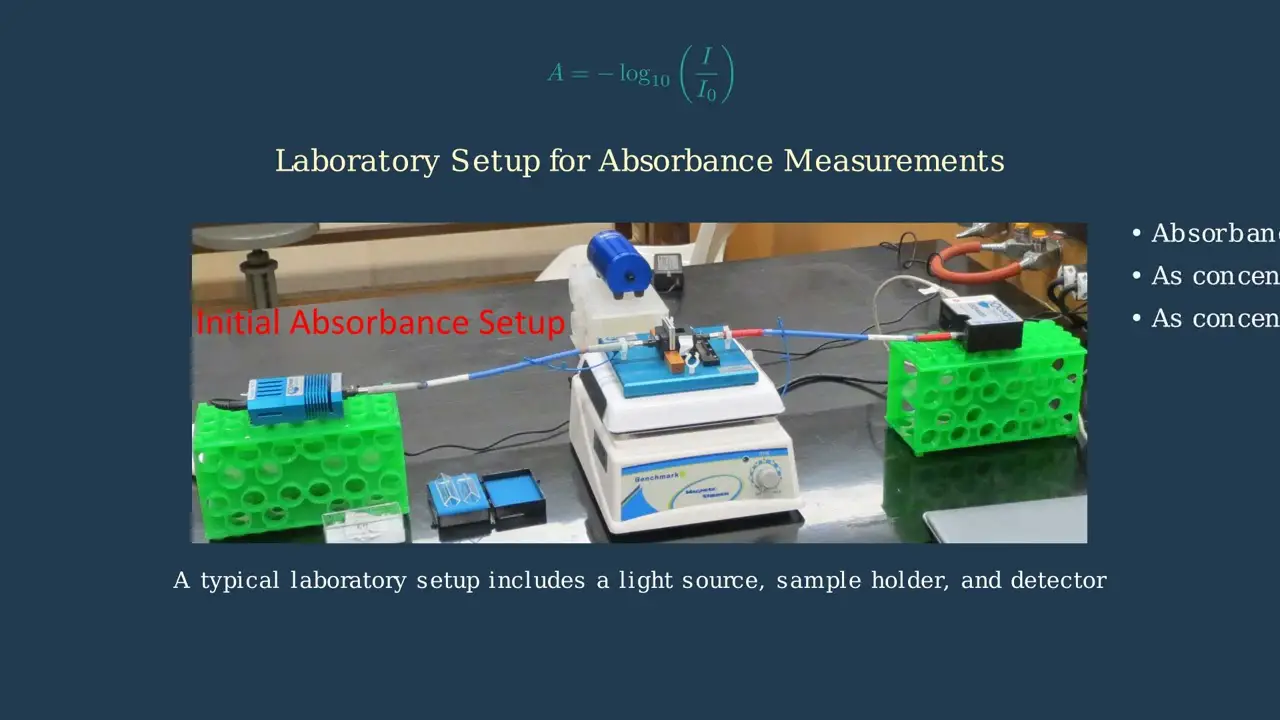
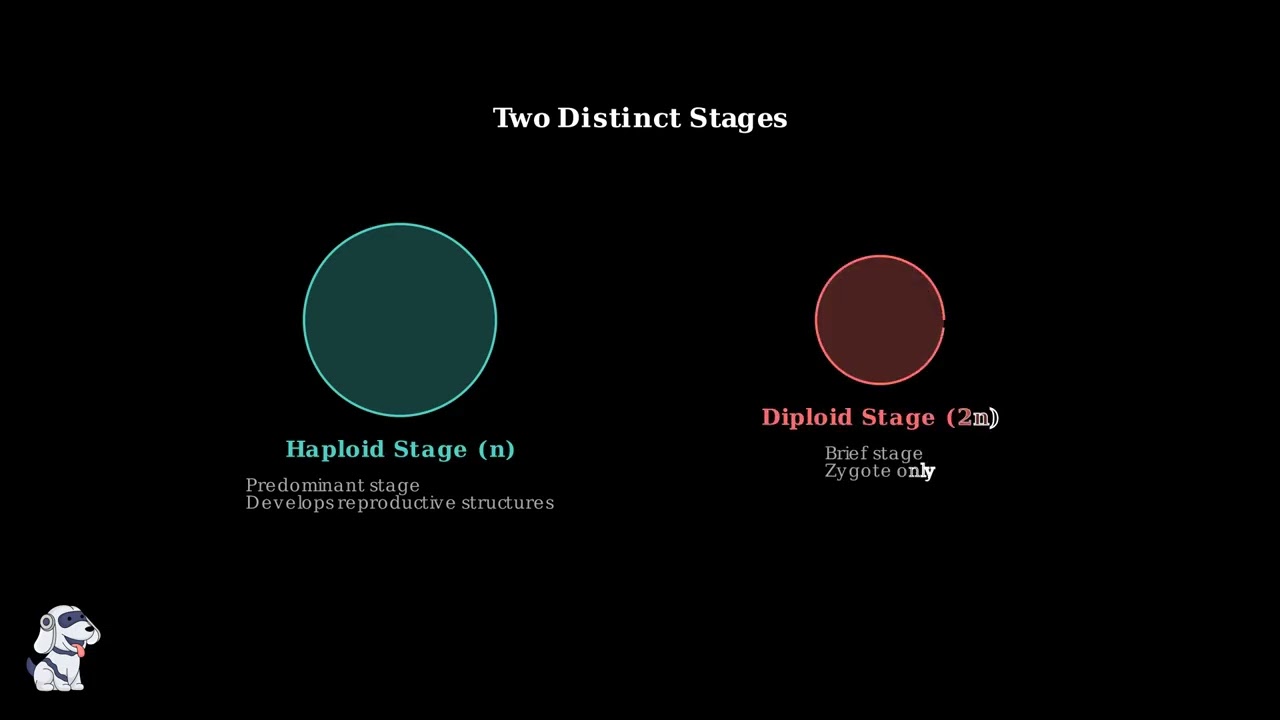


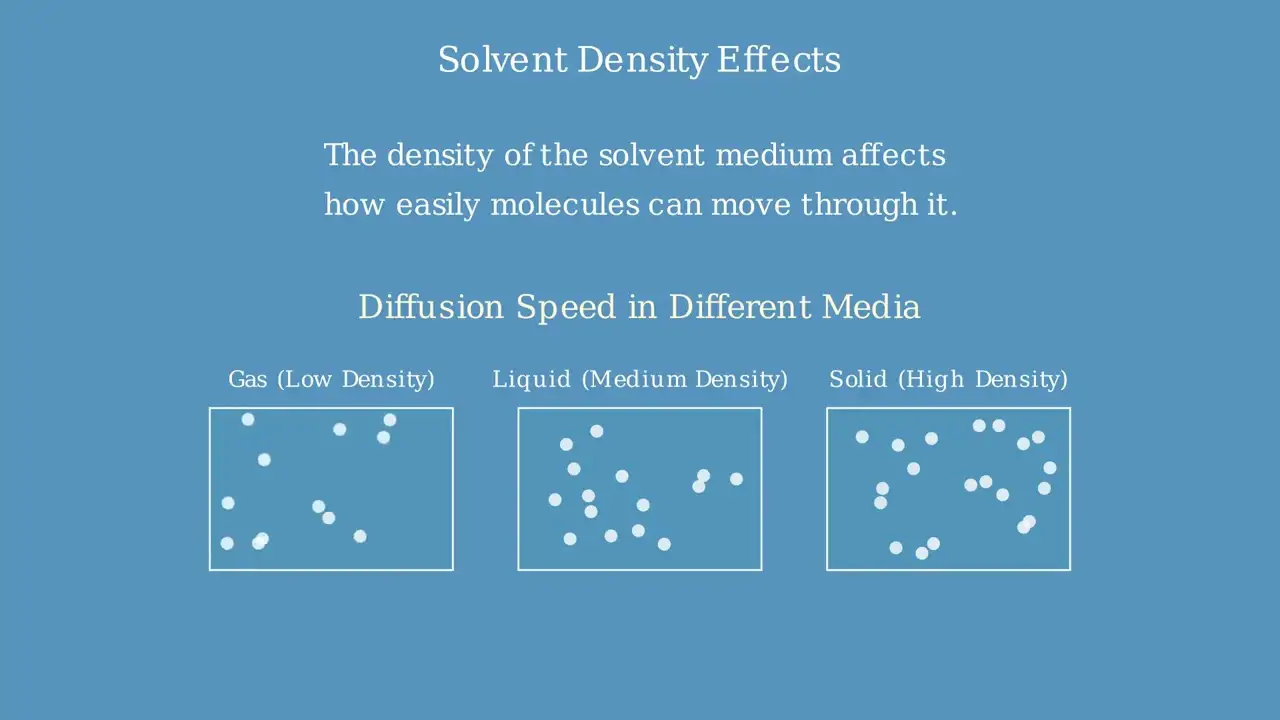

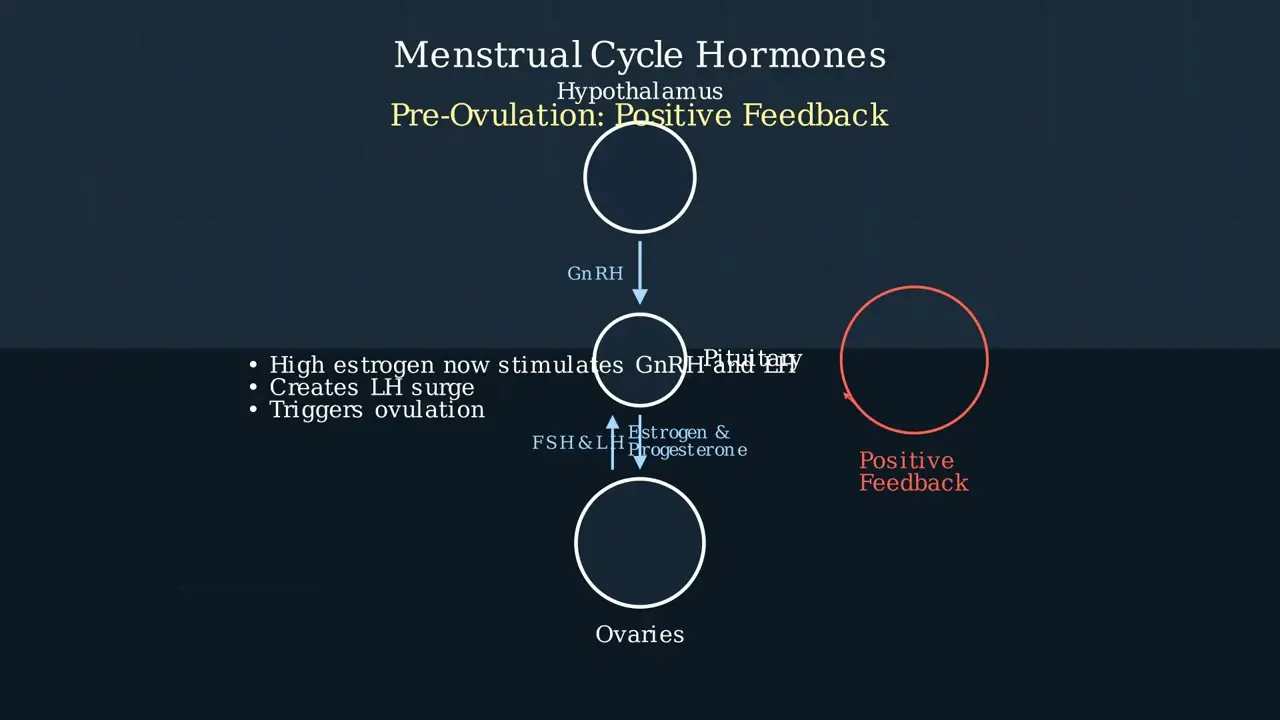
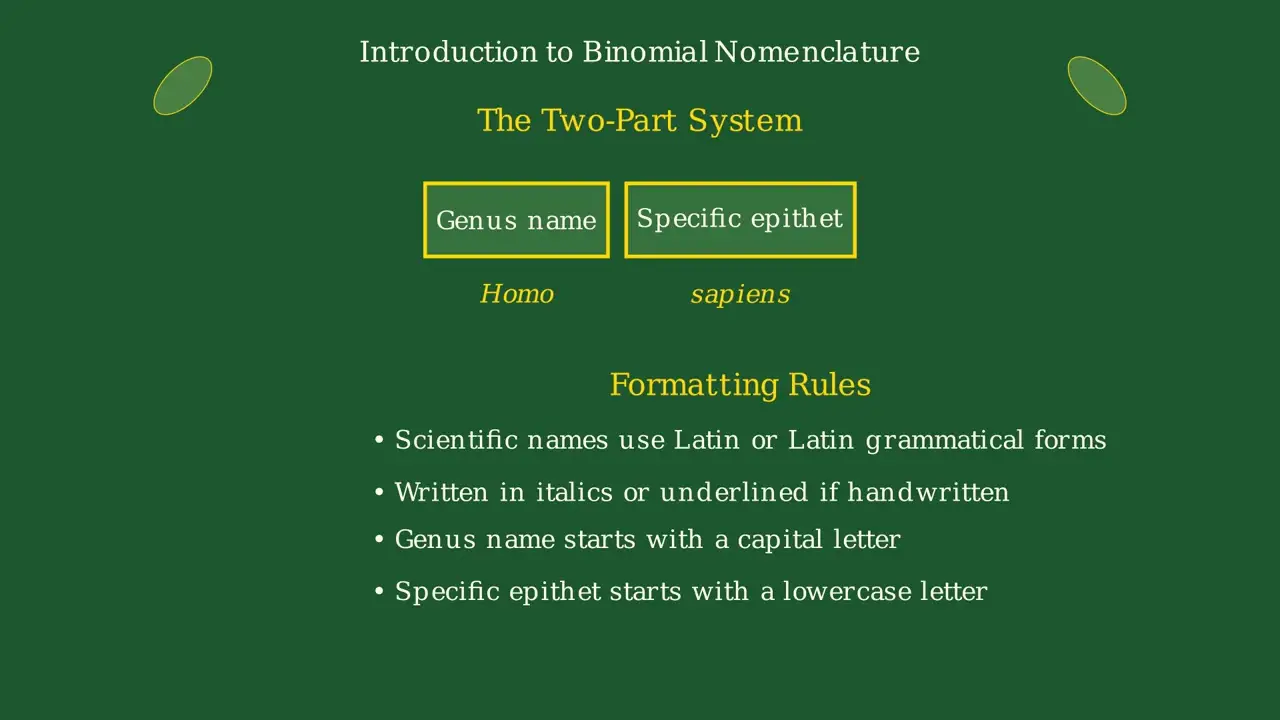
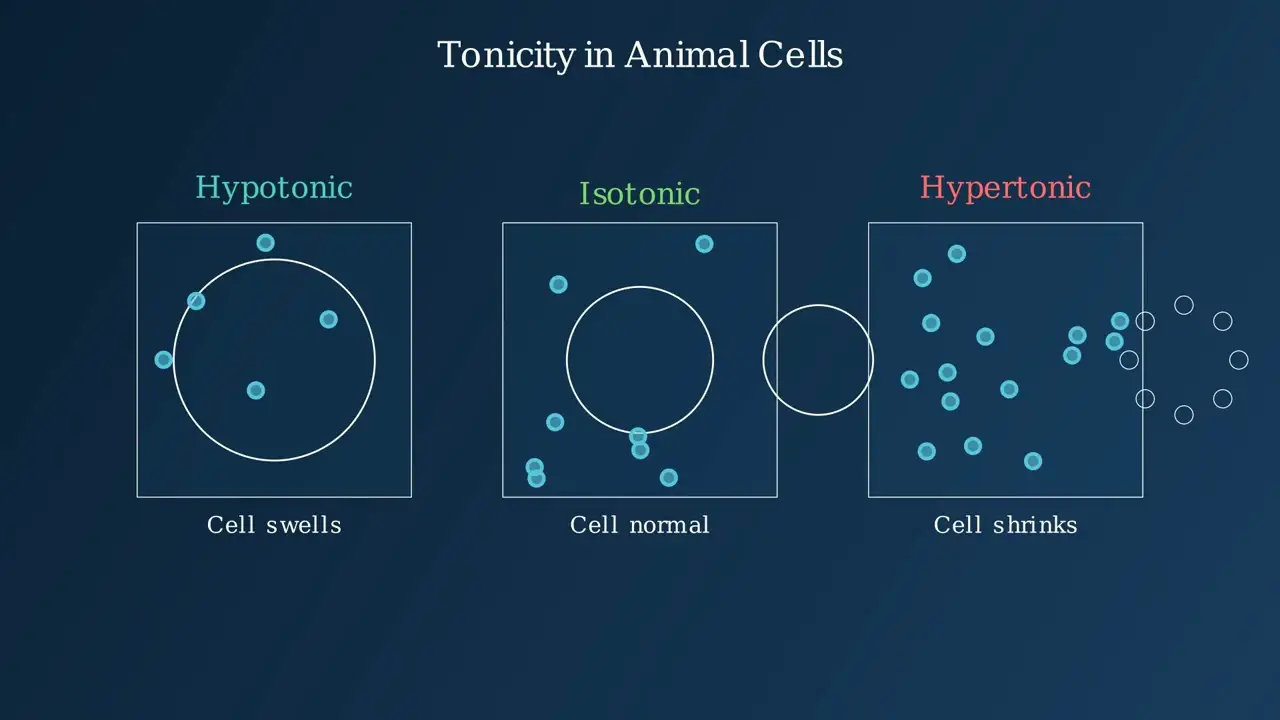
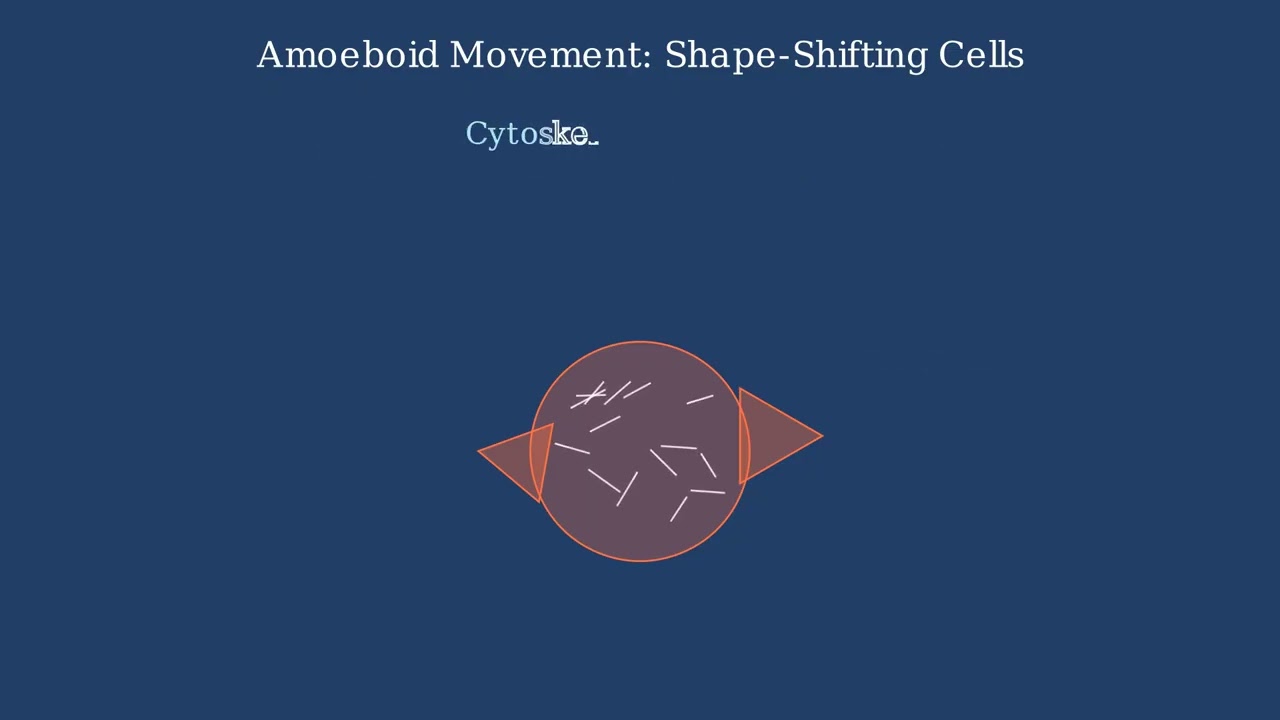
- Text Highlighting: Select any text in the post content to highlight it
- Text Annotation: Select text and add comments with annotations
- Comment Management: Edit or delete your own comments
- Highlight Management: Remove your own highlights
How to use: Simply select any text in the post content above, and you'll see annotation options. Login here or create an account to get started.